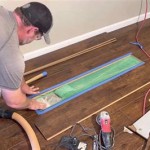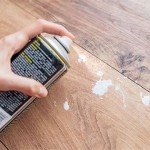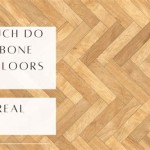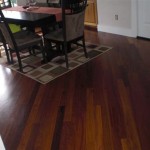What To Put On Concrete Floor In Basement
A basement can be a valuable living space, offering extra room for a home office, gym, playroom, or even a guest bedroom. However, the concrete floor can present a challenge, often being cold, damp, and aesthetically unappealing. Fortunately, several options exist for transforming your basement floor into a comfortable and attractive space. This article will explore some of the most popular and effective solutions to cover your basement concrete floor.
1. Paint or Stain
Painting or staining the concrete floor is a simple and affordable way to enhance its appearance. Concrete paint is available in various colors and finishes, allowing you to achieve a modern, rustic, or even decorative look. Before applying paint, ensure the floor is clean, dry, and free of any imperfections. A primer can be used to improve adhesion and provide a smooth finish. Concrete stains, on the other hand, penetrate the surface, creating a more subtle and natural appearance. Consider using epoxy paint for a durable and waterproof finish, especially in areas prone to moisture.
While painting or staining can significantly improve the look of your basement floor, it does not offer insulation or cushioning. Therefore, it might not be the best option for areas where comfort is a primary consideration.
2. Flooring Tiles
Flooring tiles offer a wide range of styles, materials, and price points, making them a popular choice for basement floors. Ceramic and porcelain tiles are durable, water-resistant, and easy to clean. They come in various patterns and finishes, allowing you to create a unique design. If you're looking for something more budget-friendly, consider vinyl tiles. These are relatively easy to install with adhesive backing and mimic the look of natural stone or wood.
When choosing flooring tiles for your basement, consider factors like moisture resistance, durability, and insulation. Ensure the tiles are properly installed, with adequate spacing for expansion and contraction. It's also important to choose a grout that is resistant to moisture and mildew.
3. Carpet
Carpet can provide warmth, comfort, and sound absorption, making it an excellent choice for basement floors where these qualities are desired. However, consider the potential for moisture issues and the need for proper ventilation to prevent mold growth. If you opt for carpet, choose a moisture-resistant variety and ensure the subfloor is adequately prepared to prevent dampness. Consider installing a vapor barrier to protect the carpet from moisture rising from the concrete.
Carpet can come in different materials, textures, and styles, allowing you to customize your basement to match your taste and needs. While carpet can enhance comfort, it may not be the most practical choice for areas with high traffic or where spills are frequent.
4. Laminate Flooring
Laminate flooring is a popular choice for basement floors due to its affordability, durability, and ease of installation. It simulates the look of wood or tile but is made from layers of composite materials. Laminate flooring is also relatively water-resistant, making it suitable for basements with potential for moisture issues. However, it can be less durable than other flooring options and may not be as comfortable underfoot as carpet.
Laminate flooring is available in various styles and finishes, allowing you to create a sophisticated and stylish look for your basement. Make sure to choose a laminate flooring option that is specifically designed for basement use to ensure moisture resistance and durability.
5. Engineered Hardwood
If you're seeking a high-end and luxurious look for your basement, engineered hardwood flooring is an excellent option. It is made from real wood but is more stable and less prone to warping than solid hardwood. Engineered hardwood can withstand moisture better than solid wood, making it suitable for basements with potential for humidity. However, it can be more expensive than other options.
Engineered hardwood comes in various wood species, colors, and finishes, allowing you to create a custom look for your basement. Proper installation and maintenance are essential to preserve the beauty and longevity of this flooring option.
6. Basement Flooring Systems
Specialized basement flooring systems offer a combined solution addressing insulation, moisture control, and aesthetics. These systems typically involve interlocking panels made from foam or composite materials that snap together, creating a floating floor. The panels are designed to provide insulation, reduce sound transmission, and provide a durable and water-resistant surface.
Basement flooring systems are an excellent option for those seeking a comprehensive solution for their basement floors. They offer convenience, aesthetics, and functionality, making them a good choice for various basement applications.
Choosing the right flooring for your basement depends on your specific needs, budget, and aesthetic preferences. Consider factors such as moisture resistance, durability, comfort, and ease of installation to make an informed decision. With so many options available, you can transform your basement floor into a comfortable, attractive, and functional space suitable for diverse needs.

Polished Concrete Flooring Options For Your Basement Duraamen

How To Stain Concrete Basement Floor Diy Guide

15 Diy Basement Flooring Ideas Affordable Options For Basements

A Guide To Stained Concrete Basement Floors

Blog Ideas For Your New Concrete Finished Basement

Marblelife Basement

Bolster Your Basement Concrete Floor Coating Essentials Viking Floors

Diy Basement Floor Stain And Finish 2 Colors Without Etching

Concrete Basement Cellar Floor Repair In Worcester Ma

Stained Concrete Basement Floor Ideas
See Also







